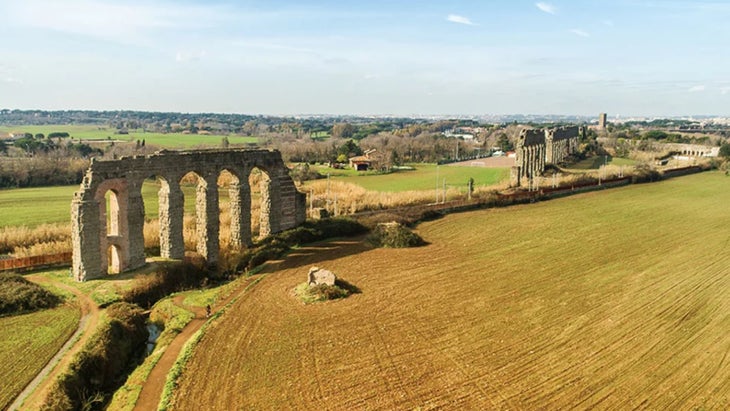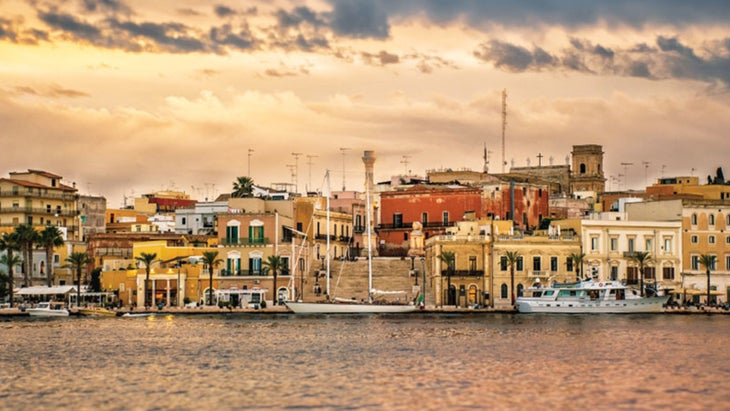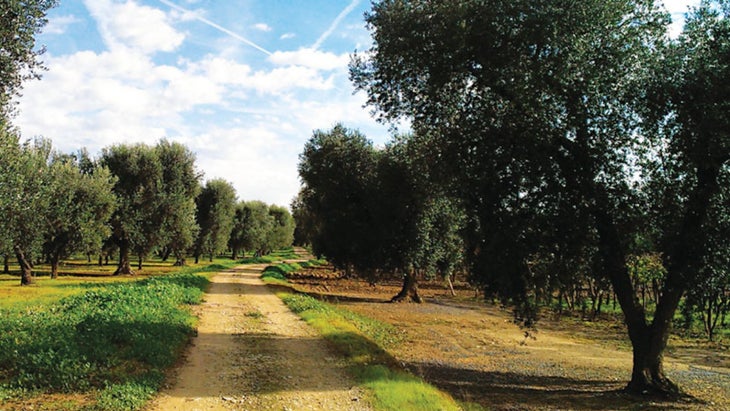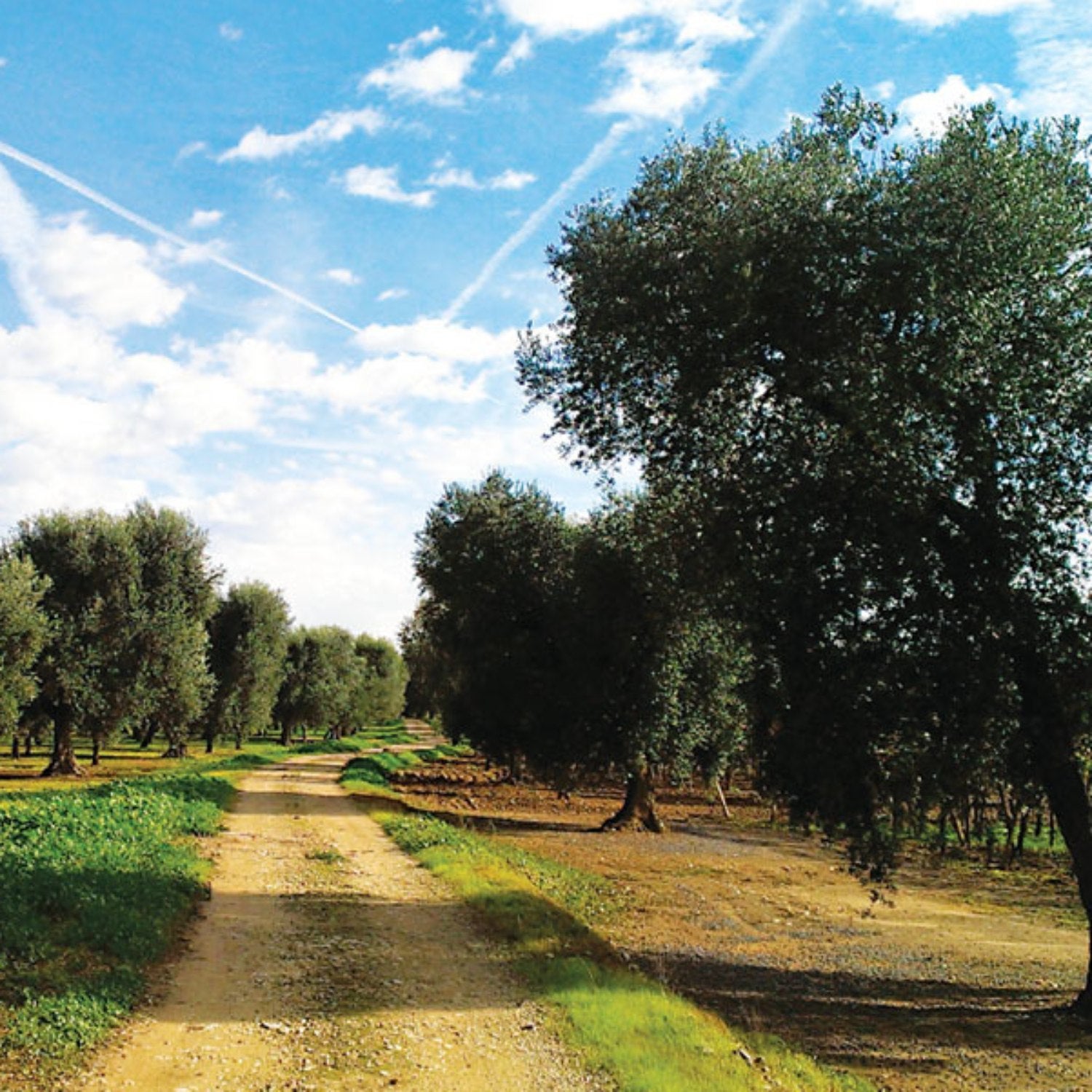In the city of Brindisi, southeast Italy, the top of the stairs in the old town marks the end of the Appian Way. It is one of many Roman roads that the empire used to conquer so much of the known world. Dating from 312 B.C. the Via Appia is the oldest and likely the most important of these engineering marvels. It was designed specifically to move military might to the city of Capua in Campania, where the Romans fought their rival Samnites in a war for Italian domination. Those battles and eventual conquest would open the door for Rome to rule the rest of the Western world for many centuries.
From the Roman column that traditionally marks the ancient road’s endpoint, stairs lead down to the harbor and the deepblue Adriatic Sea. For a town of Brindisi’s stature, outsized historical consequence is provided by the Roman column and the stairs—named for epic poet Virgil, who died in 19 B.C. in the building to the right of the stairs, if you’re coming down, or one that once stood there. As the Roman Empire declined, so did Brindisi’s strategic importance, until the Crusades of the Middle Ages made the port and harbor one of Italy’s busiest, once again sending soldiers to war.
At the top of the stairs, across from the place where Virgil died and just past the column, there’s a seafood restaurant in an orangish, yellowish stucco building. The frutti di mare is as fresh as they come, plucked daily from the Adriatic. They are delicately prepared with a very light touch—though the gregarious chef is missing three fingers from his right hand, the result of a knife accident.


A short ride outside of Brindisi in the Puglian countryside there are groves of olive trees as ancient as this region’s history. Olive trees, gnarled and bent, which have lived here for more than a thousand years, still produce olive cultivars like Coratina, Peranzana and Ogliarola. These olives offer a variety of flavor profiles but tend toward spicy, brisk finishes.
The trunks on some of these trees are massive, gnarled and sort-of frightening looking—you can imagine them coming to life at times. The ground, covered in tarps, is strewn with olives most days and a man sorts olives in a makeshift shaker out of the back of a tiny pickup truck. This is the only job he’s ever had. He started working these family groves as a young boy and today, well into his 70s, he’s still here, standing guard among these ancient trees.
It’s nearly impossible to overstate the importance of olive oil in the Mediterranean basin, which includes southern Europe and northern Africa. Olive-tree cultivation dates to 6,000 B.C. and its prominence remains ever present on tables throughout Italy, France and Spain.

Olive oil has been a major component of Mediterranean diets, as an important source of fat and flavor, for eons. Extra virgin olive oil has taken center stage as the staple of a lifestyle and diet that has become the envy of the rest of the world, and even an intangible cultural heritage recognized by Unesco.
While olive groves are found all around the Mediterranean, nowhere does this viscous gold hold such a fundamental place at the table and in the soul as it does in Italy. And Puglia produces much of Italy’s olive oil market; and while not all of the trees are ancient, many of them are and they face an uncertain future.
A bacterium named xylella fastidiosa could mean doomsday for these ancient olive groves. The ulivi secolari, as these ancient trees are known, have watched as the history of modern Italy and Europe has developed around them. There are about half a million such trees in Puglia, centuries old, some in the millennia. They are under existential threat from this bacterium, spread by a local bug long thought of as harmless, which basically infects the tree’s ability to take water from its roots by globbing up the xylem (the tubes that transport water throughout the tree) and starving the trees from the inside out.
A full 15 percent of the world’s olive oil comes from Italy and about 40 percent of Italy’s export market is supplied by Puglia. This is both an economic and cultural problem for the region—more than a million trees were lost by 2019. And the problem is spreading to France and Spain as well as North Africa. Scientists and farmers have come together to try and stave off this tiny menace, looking at both cutting-edge scientific approaches and old-school Apulian home remedies.
A region and a country’s history and culture hangs in the balance.


